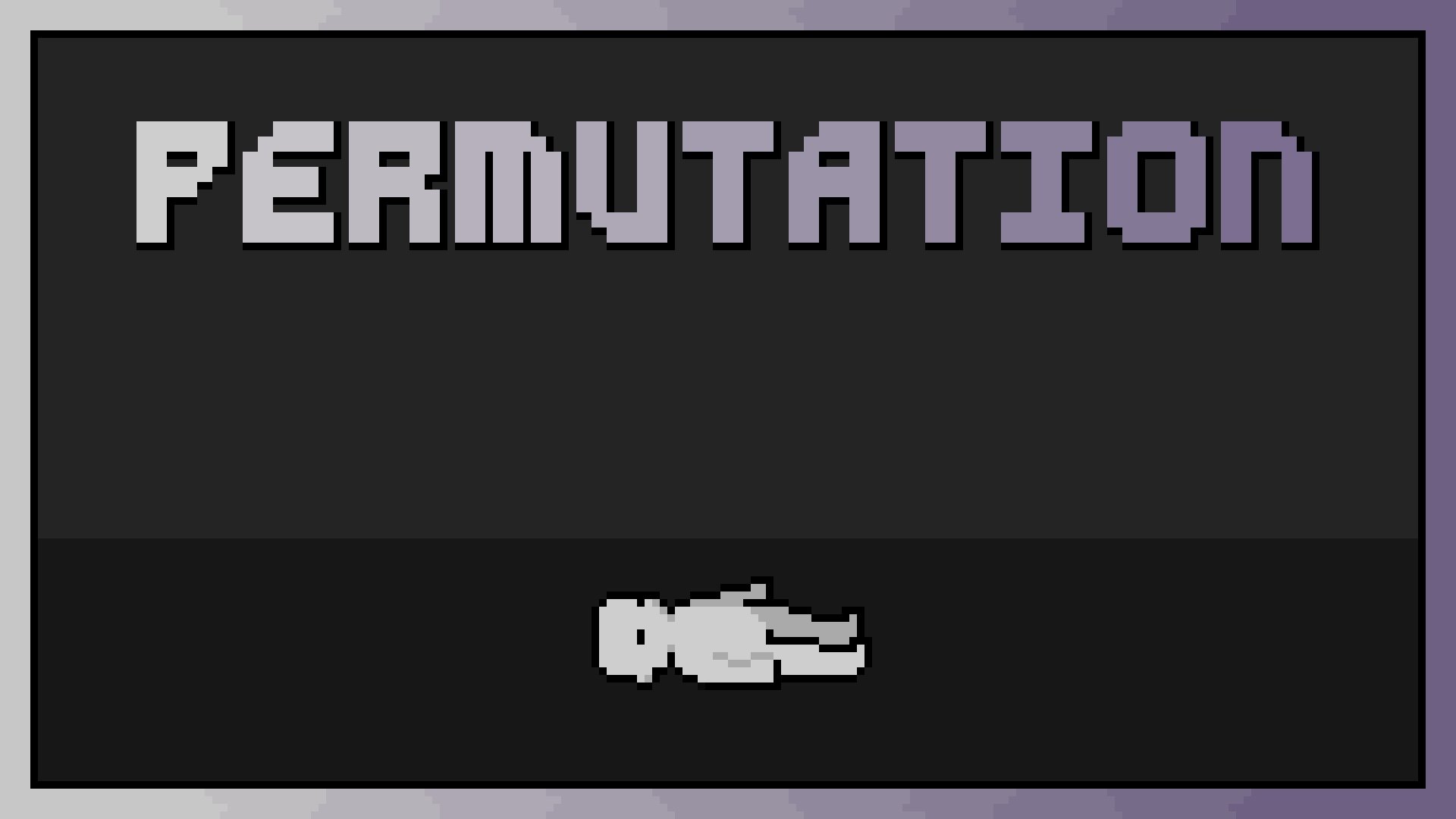permutation
A branching narrative style game that collaborates with players to establish narrative and character, exploring the effects of both audio- and visual-based outputs on one’s perception of story and identity.

All players begin PERMUTATION by assuming control of the same vacant figure, lost in a cavernous space. Featureless and without identity, the figure must seek to regain what has been lost by traveling into worlds of sound. Without visuals, players will immerse themselves in the story, affecting its trajectory with their choices. When they reemerge into the visual world once again, the player’s personal input into the reality of the game will be reflected by a physical change in their player character. Players continue this pattern until they complete the accompanying narrative arc, thus fully reclaiming the identity of the lost figure. The goal of Permutation is to explore the relationship that the player feels between themselves and the character as it emerges throughout the game. Will they feel the same sense of autonomy over their creation as they would when utilizing an aesthetic based character creator tool? Or will the player’s personal connection with this in game character manifest in a different way?
about
Created in fulfillment of the requirements for the Degree of Masters of Fine Arts in Design and Technology, The New School, Parsons School of Design.
February 2023 - May 2023

As much as I love playing games now, I had little experience with them until I reached adulthood. As a young girl I felt little to no connection with the themes and narratives that dominated video games. The game industry was – and to some extent still is – built for and marketed to boys and men.
Finding experiences where I was allowed to design my own avatar changed this. I found what had been missing for me in games: A strong connection with the identity of the entity I was playing as. When creating my own game, I wanted to explore other ways in which a player might reflect their identity within a game. How would a player connect with their character if they had no indicator of their physical attributes? If their choices alone were responsible for creating their avatar’s physical identity, would players still feel represented by the character born from those choices?
Inspiration
PERMUTATION seeks to explore how altering modality can affect one’s perception of narrative, and how that unique experience can affect a player’s relationship to identity within a story. It is not always possible to create for every sense and be perfectly multimodal in every situation, but if media and technology were designed for many different senses in varying combinations, then there would be a library of experiences and technologies that could provide something for everyone. With this idea in mind, I wanted to take the classic interactive and narrative elements of a video game and twist them. In my exploration of modality and narrative design in PERMUTATION, I decided to include visuals, but the interaction, the narrative, plot, would primarily exist in a world of sound. I wanted to include visuals in this iteration as I think I can create a powerful relationship between the player’s own influence on the game through choices made in audioscapes and their resulting visual changes.
Narrative design
Narrative prototype 1
I began in Twine, a game-design platform specifically created for branching narratives. Here, I wrote the entire story in the same format. This allowed me to create the story without confusing things between different mediums and modalities.
The script still needed to be fully written in detail, and the consequences for the visual aspect of the game needed to be mapped, so I created another narrative map, this one with labels that specifically indicated the transitions between modalities. This map existed alongside the written dialogue script, and together they created the structural clarity necessary to begin making this game. They are still complex, as the narrative structure itself is complex, but it allowed me to follow it easily, so I could get to creating my game in Unity, where the finished project would be accessible to players other than myself.
Narrative prototype 2
Narrative prototype 3
Finally I mapped this our into Unity scenes, so that I could keep track of the complex storyline while building my game. This map gives you the complete scope of the story.




